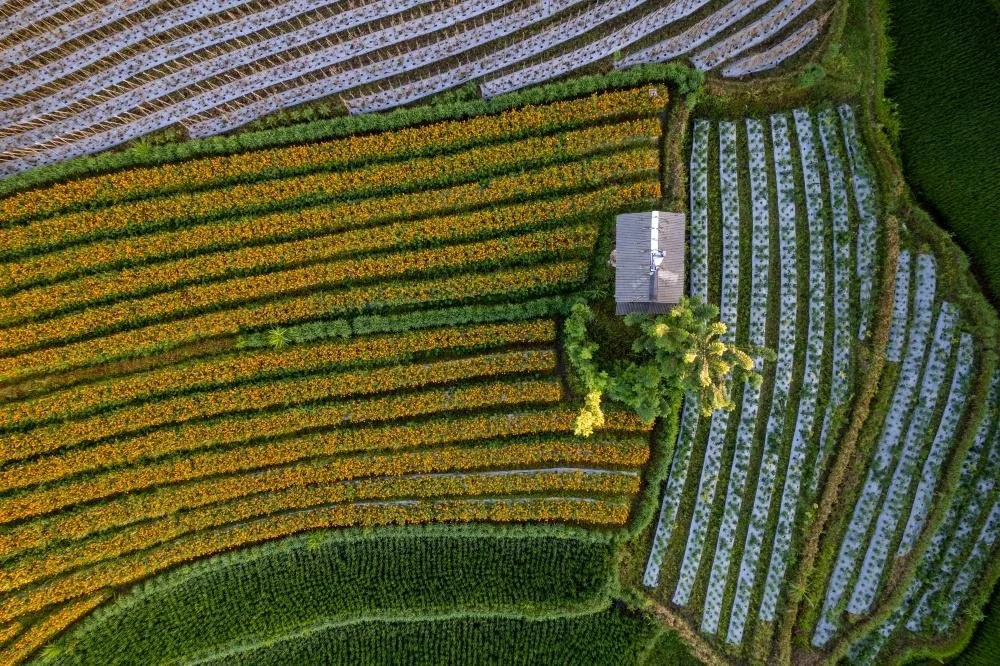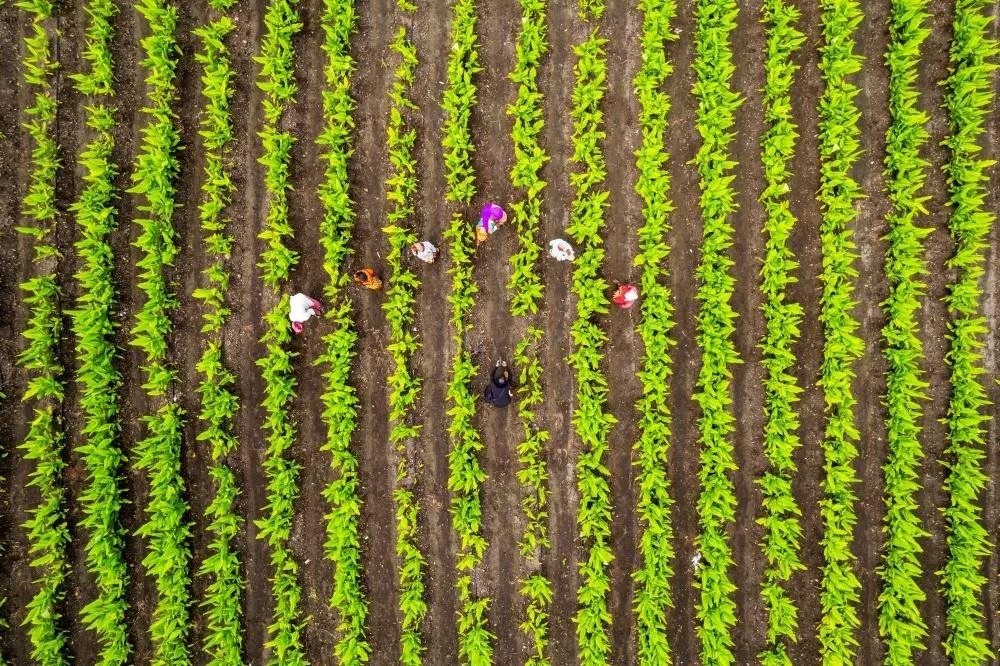How Does Crop Rotation Work to Support Control Pests?
By alternating crops strategically, farmers can disrupt pest lifecycles, enrich soil health, and reduce chemical reliance—laying the groundwork for more productive, sustainable fields over time.
Modern agriculture demands more than seasonal fixes. As pest pressures intensify due to climate variability and monoculture practices, growers need solutions that do more than react. They now need systems that anticipate.
More than a mere traditional technique, crop rotation is a forward-looking pest control strategy that aligns with the future of sustainable agriculture. By alternating crop types across seasons, growers disrupt pest lifecycles and suppress population growth naturally, without over-reliance on chemical interventions.
This approach also builds long-term field resilience. Rotated crops improve soil biodiversity, enhance microbial activity, and support healthier root systems, making the entire ecosystem less hospitable to pests. Over time, this integrated method not only improves yield and reduces pest load, but also supports regenerative farming goals.
So, could crop rotation very well be the scalable solution that helps growers build healthier, more productive farms for generations to come?
Brief Overview of Crop Rotation
Crop rotation works on one simple principle: disrupt the conditions pests depend on to survive.
By alternating crops with different biological and nutritional profiles across seasons, growers make it harder for pests and diseases to persist. After all, many soil-borne pathogens rely on a steady host crop to complete their lifecycle. When that cycle is broken, their populations naturally decline, often within just a few planting cycles.
But pest control is only part of the equation. This system also restores balance to the soil. For example, planting nitrogen-fixing legumes after high-demand crops like corn helps replenish nutrient levels without synthetic inputs. Likewise, varying root depths improves soil structure and water infiltration, while reducing compaction.
Applied strategically, crop rotation reduces input dependency, promotes biodiversity, and slows pest resistance. And with the right crop combinations, farmers can boost long-term soil health while protecting productivity across multiple seasons.
Ultimately, it is a necessary shift toward smarter agriculture that works with nature, not against it.
What is Crop Rotation in Integrated Pest Management (IPM)
In Integrated Pest Management (IPM), every decision counts, and crop rotation is one of the most effective foundational strategies. This is because instead of treating pests after they appear, rotation works proactively by making the environment less favorable for pest survival in the first place.
By cycling different crop families, farmers remove the consistent food sources that many pests and soil-borne pathogens rely on. For instance, rotating out of corn can drastically limit corn rootworm populations, which depend on predictable planting patterns.
Beyond insects, crop rotation can also influence weed dynamics. Some crops naturally suppress weeds by shading the soil or altering planting and harvesting timelines, while others release compounds that inhibit weed growth.
The result is a landscape where pest pressure is controlled not by repeated chemical use, but by design. And when paired with other IPM strategies, crop rotation can do a whole lot more, and all without compromising yield or sustainability.
Advantages of Crop Rotation
While crop rotation is often discussed for its pest suppression benefits, its full value lies in how it reshapes long-term farm health.
1. Healthier Soils
Crop rotation strengthens soil systems by improving structure and biological function at the same time. This is because alternating crops introduces different root patterns into the ground, which enhances aggregation, opens up pore spaces, and boosts air and water movement. This creates conditions that support stronger root development and active soil life.
Deep-rooted plants such as legumes or radishes, for instance, tend to break up compacted layers and allow moisture to reach deeper zones. In contrast, cereals and grasses knit the surface together, holding topsoil in place and reducing erosion. These complementary effects accumulate season after season, cutting runoff and keeping nutrients where they are needed.
Because rotation lowers the need for repeated tillage, it helps retain organic matter and lock carbon into the soil. Over time, these practices build a soil base that sustains higher productivity while meeting modern environmental and economic standards.
2. Improves Fertility
Healthy soil isn't built overnight, but crop rotation can bring measurable improvements since different crops contribute different residues like fibrous roots, organic matter, and microbial interactions that work together to improve soil quality over time. This diversity feeds a wider spectrum of soil organisms, creating an environment where nutrients are cycled more efficiently and retained longer.
Moreover, when crops with varying nutrient demands are rotated systematically, the soil is less likely to be depleted in a single element. For example, planting legumes after high-demand cereals helps restore nitrogen levels naturally, reducing the need for synthetic inputs. This not only enhances nutrient availability but also slows down soil acidification and maintains more stable pH conditions.
As the soil becomes more biologically active and better structured, its capacity to support consistent yields improves without the constant addition of costly fertilizers. Over time, fields become less dependent on external correction and better equipped to sustain productivity.
3. Ensures Economic Stability
Crop rotation is also a practical move to stabilize income in a volatile farming environment. By rotating crops with different market values and growing cycles, farmers spread financial risk and reduce their exposure to market swings, pest outbreaks, or climate variability affecting a single crop type.
This diversification also brings operational savings. With less pressure from pests and more balanced nutrient cycles, farmers can reduce expenses on chemical controls and fertilizer inputs. These cost savings, combined with the potential for higher yields, make the entire system potentially more efficient and profitable.
Practical Tips for Implementing Crop Rotation with Monitoring
Crop rotation is most effective when backed by a clear strategy and real-time field insights. Here’s how to start building a system that works:
Alternate crop families across seasons: Rotate between cereals, legumes, and root crops to naturally interrupt pest and disease cycles.
Time rotations with pest pressure in mind: Use data to align crop changes with pest lifecycles. For example, rotating away from host crops before peak reproduction phases can drastically reduce infestations.
Incorporate pest-resistant or non-host crops: Choose varieties less susceptible to known threats. This limits food sources and slows down pest adaptation over time.
Fill rotation gaps with soil-building cover crops: Add legumes or grasses during off-seasons to improve organic matter, protect topsoil, and maintain biological activity.
Use precision monitoring tools to guide decisions: Leverage the relevant software to identify new insects, hotspots, and measure the impact of your rotations over time—down to each plot.
Integrate with other IPM techniques: Rotation works best alongside other strategies like targeted interventions when thresholds are crossed.
Every field has its own variables. What matters most is building a system that adapts, observes, and evolves from one season to the next.
How RYNAN Insect Monitoring Enhances Crop Rotation
RYNAN’s insect monitoring technology adds a powerful layer of precision to crop rotation strategies. Using AI-powered recognition, our smart pest monitoring device captures and identifies insect activity in real time, offering continuous updates on pest movement across your fields. The system detects population changes early, allowing farmers to time their crop rotations with greater accuracy, interrupting pest cycles before they escalate.
This synergy reduces the need for reactive spraying and minimizes reliance on broad-spectrum pesticides. Instead of guessing when and what to plant, farmers can rotate crops based on live data, choosing varieties that are less attractive to the dominant pests in the area. The result is smarter land use, improved field hygiene, and a meaningful step toward reducing environmental impact.
Integrated into the RYNAN Mekong App, the system provides predictive alerts and field-specific insights, all from a single platform. Designed to cover up to 10 hectares per device, this solution delivers scalability without complexity.
Get in touch with our team to see how our smart farming company can support your rotation plans and reduce chemical dependency.


